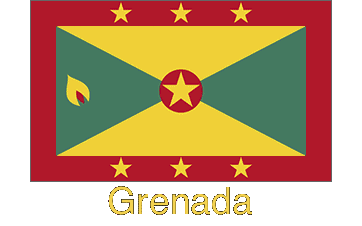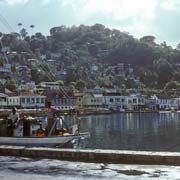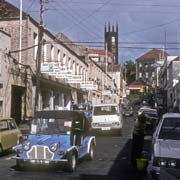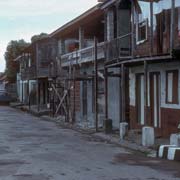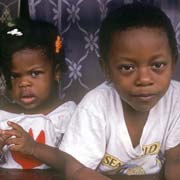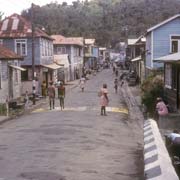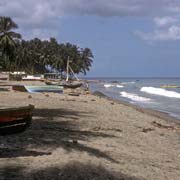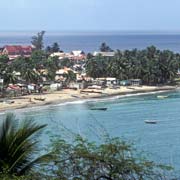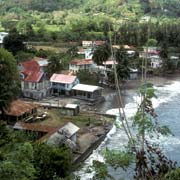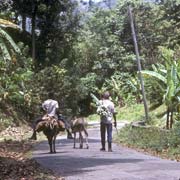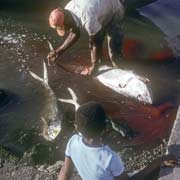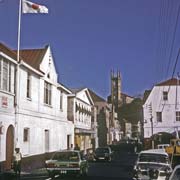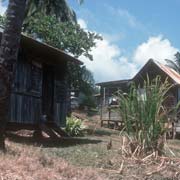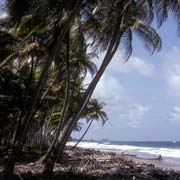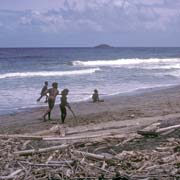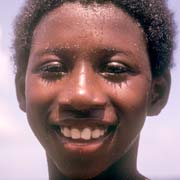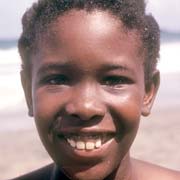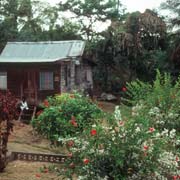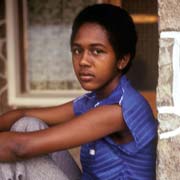Photos of Grenada, an island nation in the Caribbean
Grenada, an island nation in the Caribbean
The main island of Grenada is only 30 kilometres long and 15 kilometres wide, with an area of 344 km². St. George’s, with a population of around 90,000, is the small nation’s capital. The city is surrounded by a hillside of an old volcano crater located on a horseshoe-shaped natural harbour; it was founded by the French in 1650 as Fort Royale and was renamed by the British after they conquered it in 1762. On 1 November 1775, in what became known as “The great fire of St George’s”, most of the French-built houses burnt down.
you may then send it as a postcard if you wish.
Grenada’s Fort, built to protect the city’s harbour, is now a tourist attraction and home to their police headquarters. The revolutionary leader and prime minister Maurice Bishop and seven of his followers were executed here in 1983. The three monumental churches along Church street were severely damaged during Hurricane Ivan in September 2004. Of St. Andrew’s Presbyterian Church, dating from 1831, which, built on a small hill, had been a dominant feature on the skyline of St. George’s for over 170 years, only the tower and part of the southern wall has remained standing.
Nowadays, the city is a popular Caribbean tourist destination, attracting thousands of tourists and cruise ships. In recent years the town has significantly developed while preserving its history, culture, and natural beauty. Market Square is in the heart of Grenada’s commercial centre. This square was once used as a place for public executions and trading slaves. Nowadays, farmers and spice vendors sell their produce and tropical fruits and vegetables in abundance to locals and visitors.
Gouyave is the third-largest fishing town in Grenada, with a population of around 9,000. It is located halfway up the western coast of Grenada and is the capital of Saint John Parish. Originally called Charlotte Town after Queen Charlotte of Britain, it was renamed Gouyave by the French because of its guava trees. It used to be a relatively poor community of fishermen and rural nutmeg and cocoa farmers but has recently developed into a cosmopolitan town with fine houses, bars, nightlife and festivals, a favourite destination for tour operators due to its diversity of attractions.
One of the town’s annual celebrations is Fisherman’s Birthday. On 29 June, fishermen come from all over Grenada for competitive boat racing, entertainment, fish foods, and many other activities. Also, every Friday the town celebrates “Fish Friday”, a weekly festival that offers a wide range of fish dishes and entertainment. The Fish Friday celebration was started as part of community development to promote Gouyave as a fishing village.
In the far north of the island, Sauteurs is a fishing town of about 1,300 people in Saint Patrick Parish. The town overlooks Sauteurs Bay. In 1651 the last remaining Carib Natives of Grenada jumped off a 40 metres tall cliff (later named Caribs’ Leap) to their deaths rather than face domination by the conquering French. The town that developed here was called “Sauteurs”, French for “jumpers”, a permanent reminder of those tragic events.
Saint Andrew, on the east coast, is the largest parish in Grenada. The main town is Grenville, Grenada’s second-largest town. Between Grenville and the town of Dunfermline is the village of Paradise, only 3 kilometres from Pearls Airport, Grenada’s first airport. In 1984 this was replaced as Grenada’s main airport by the Point Salines (now Maurice Bishop) International Airport.
As everywhere around the island, there are good beaches here, popular with the local people.


